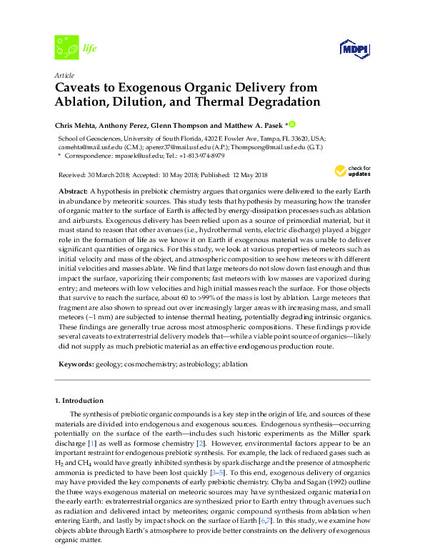
- geology,
- cosmochemistry,
- astrobiology,
- ablation
A hypothesis in prebiotic chemistry argues that organics were delivered to the early Earth in abundance by meteoritic sources. This study tests that hypothesis by measuring how the transfer of organic matter to the surface of Earth is affected by energy-dissipation processes such as ablation and airbursts. Exogenous delivery has been relied upon as a source of primordial material, but it must stand to reason that other avenues (i.e., hydrothermal vents, electric discharge) played a bigger role in the formation of life as we know it on Earth if exogenous material was unable to deliver significant quantities of organics. For this study, we look at various properties of meteors such as initial velocity and mass of the object, and atmospheric composition to see how meteors with different initial velocities and masses ablate. We find that large meteors do not slow down fast enough and thus impact the surface, vaporizing their components; fast meteors with low masses are vaporized during entry; and meteors with low velocities and high initial masses reach the surface. For those objects that survive to reach the surface, about 60 to >99% of the mass is lost by ablation. Large meteors that fragment are also shown to spread out over increasingly larger areas with increasing mass, and small meteors (~1 mm) are subjected to intense thermal heating, potentially degrading intrinsic organics. These findings are generally true across most atmospheric compositions. These findings provide several caveats to extraterrestrial delivery models that—while a viable point source of organics—likely did not supply as much prebiotic material as an effective endogenous production route.
Life, v. 8, no. 2, art. 13
Available at: http://works.bepress.com/matthew-pasek/13/